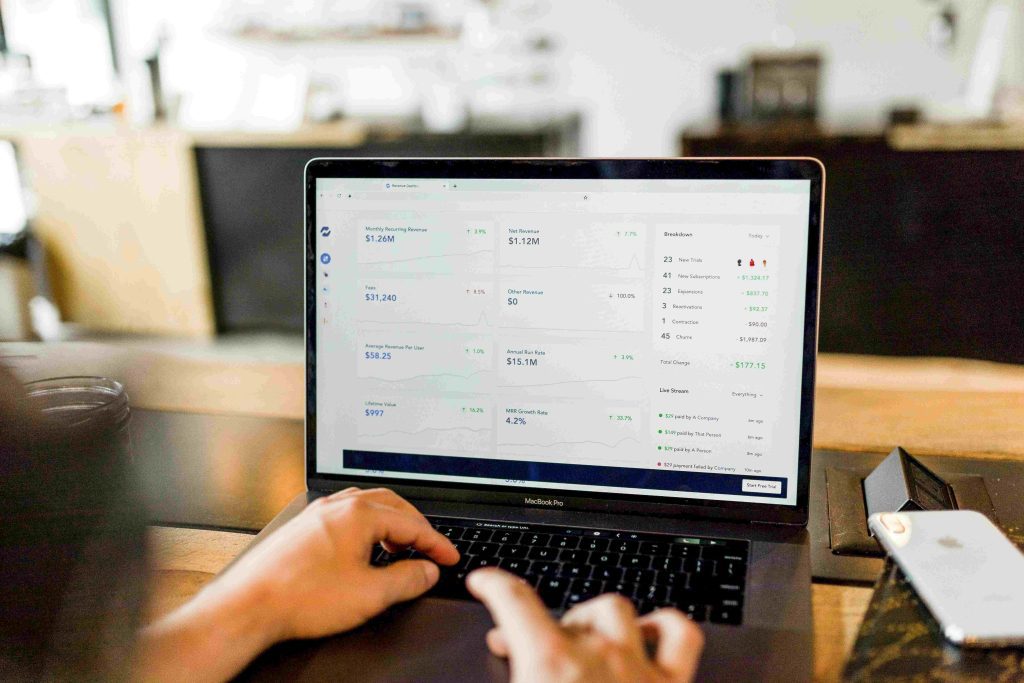

As Google gears up to block third-party cookies in Chrome, the digital business landscape is bracing for significant impacts and a reshaping of consumer services. The phasing out of third-party cookies, driven by the goal of respecting user privacy, has significant implications for online advertising and the customer journey.
Now more than ever, consumers are more cautious about data sharing, and regulators are tightening privacy requirements; this seismic shift creates both significant challenges and opportunities for digital marketers
Let’s explore the impact and discuss the opportunities of ‘cookie-less’ digital marketing driven by technological innovation and a greater priority on online security.
Bad links affect SEO because they weaken the quality and quantity of a site’s link profile, which impacts your search engine rankings.
These dead links eat into the PageRank of a site’s inbound link profile. PageRank refers to the measure of how important a web page is in the eyes of Google. Google has been known to de-index and ban sites with too many bad links.
By removing toxic links from Google, you prevent being penalised by Google and help gain inbound links to boost your overall rankings. Today, we will define bad links and then show you how to remove them.

Google first announced its plan to phase out third-party cookies in January 2020. After several delays, Google remains committed to eliminating third-party cookies usage. The timeline is as follows:
Google first announced the phase-out support for third-party cookies in the browser.
Google announced a two-year delay for the third-party cookie phase-out to the second half of 2023.
Google delayed the phase-out plan to the second half of 2024.
Chrome restricted third-party cookies for 1% of users to facilitate testing.
Chrome plans to ramp up to 100% of users, pending resolution of any remaining competition concerns by the UK’s Competition and Markets Authority (CMA).
This extended phase-out is designed to allow initial small-scale testing before a full-scale impact is felt by all Chrome users later in 2024.
All business and website owners are advised to prepare for this change. Here are the key steps to ensure sites are prepared for running without third-party cookies:
Check all your third-party cookies and identify which ones need action to keep working properly.
Adjust Chrome settings to block third-party cookies, then test new functions and solutions to mimic the post-phase-out scenario.
After identifying problematic cookies and their uses, explore different options and choose a suitable privacy-preserving solution:
The deprecation of third-party cookies is set to significantly impact businesses, advertisers, and digital marketers. As these cookies have been pivotal in digital advertising and marketing strategies, their phase-out will challenge the industry to adapt quickly.
Marketers stand to lose access to relevant data, making ads less targeted and potentially less relevant to customers. This could lead to decreased conversion rates and increased costs, and ultimately less effective marketing. The need for new advertising and personalisation strategies is evident; 80% of marketers report reliance on third-party cookies for digital advertising, according to Epsilon’s 3PC deprecation report.
Some specific challenges we will face are:
41% of marketers anticipate difficulties tracking the right data, which could affect their ability to identify and target potential customers.
Ad Campaign Effectiveness: An estimated 44% of marketers predict they'll need to increase spending by 5% to 25% to achieve the same goals as before. Additionally, 23% of marketing experts plan on investing in email marketing software in response to this change.

First-party data is information that businesses collect directly from their customers with their direct consent. This data is usually gathered when customers interact with a business in various ways, such as:
In the era of digital media innovation and progress, there’s an increased focus on privacy and creating better customer experiences. The use of first-party data is a key element in this shift.
It not only respects user privacy but also powers marketing efforts while preserving consumer privacy.
Identifiers such as hashed emails, phone numbers, and mobile advertising IDs play a crucial role in effective tracking and retargeting in the cookieless advertising world. These identifiers allow businesses to maintain a consistent connection with their customers across multiple platforms and touchpoints.
Identity resolution algorithms can connect these multiple IDs to an individual, enriching the dataset with additional data attributes. This enriched dataset can then be used to improve customer segmentation, acquisition, and personalisation.
The tracking pixels on your website, product, or social media profile capture first-party data. It collects behavioural and action information and stores it in your CRM or CDP. Through collecting first-party data, you can personalise email communication, like sending reminders for abandoned carts and ad retargeting customers.
Using first-party data in your marketing strategy can provide numerous benefits. Here are some use cases:
In a 2019 survey, it was found that 63% of consumers expect personalisation as a standard of service. Digital marketers who can effectively harness first-party data can achieve cost savings of up to 30% and revenue increases of 20%.
However, it’s essential to balance this with user privacy concerns – 72% of consumers would stop buying from a company due to privacy concerns.
A well-implemented first-party data strategy can offer businesses more control over their advertising strategies in a cookieless world, better understand online behaviour while respecting data protection and consumer privacy, and enhance communication and outreach efforts.
The digital marketing world is bracing for a cookieless future, where the sizes of third-party audiences are expected to diminish. This shift is driven by the need to protect user privacy and change how data collection is conducted. The decline in third-party data brings about several challenges for marketers:
The anticipated reduction in third-party audience sizes heralds considerable challenges for marketers in the digital marketing arena. Adapting to these changes will require strategic shifts and innovative solutions to ensure effective audience outreach and attribution in a cookieless future.

One of the most significant challenges in a cookie-less world is the loss of targeted ads. Without the ability to track and target ads based on a user’s browsing activity, marketers must find alternative ways to reach their targeted audience.
This means that content marketing strategies must focus on reaching the right audiences using broader methods such as Search Engine Optimization (SEO), strategic email marketing, and social media marketing.
Sources of first-party data include:
These channels allow you to get insight and use consumer and business data.
Another concern is the loss of personalisation. Cookies enable marketers to personalise content and messaging for target users based on their interests and past behaviours. Without this information, content will be more generic and less specific. This could have an impact on the success of content marketing campaigns, as personalised content has been shown to be more effective in engaging and converting users.
Despite these challenges, there are several strategies digital marketers can adopt to effectively use content marketing to reach their target audience:
Investing in Search Engine Optimisation (SEO) efforts becomes paramount with the loss of targeted advertising. Optimising your content for relevant keywords, backend optimization, and phrases can improve its ranking on Google, ensuring it appears on the first page of search results and is seen by the right people.
Social media platforms offer a way to reach a large audience without the use of cookies. Businesses can attract and retain potential customers by maintaining a strong presence on social media and regularly posting engaging content reflecting trends and updates.
Strategic email marketing is another effective way to reach and engage your audience. According to a Statista report, the number of email users was estimated at 4.26 billion in 2022 and is expected to grow to 4.73 billion by 2026. Personalised email subject lines can enhance open rates by 26%, while effective segmented campaigns can drive email revenue up by 760%, enhancing customer satisfaction and fostering long-term brand engagement.
Influencer marketing is witnessing a significant shift with the rise of micro-influencers. These individuals, with a following between 1,000 and 100,000, have emerged as powerful voices on social media platforms. Brands are increasingly leveraging these influencers for their campaigns. Their authentic endorsements come at a lower price tag than celebrity influencers, making them a cost-effective choice. Their direct connection with their audience allows brands to tap into valuable first-party data in the era of data privacy and cookie-less browsing.
Video content serves as a powerful, dynamic tool that can captivate audiences and deepen their connection with your brand. Platforms such as TikTok and YouTube have revolutionised the way we consume video, catering to the shorter attention spans of modern viewers. It’s essential to grab the viewer’s attention within the first few seconds, delivering informative and engaging content quickly and effectively. Whether it’s a short TikTok clip or a more detailed YouTube tutorial, video content offers an engaging way to share your message and educate your audience.
As the use of cookies becomes less prevalent, new technologies are likely to emerge. Keeping up with the latest trends and experimenting with these new technologies can provide targeting and personalisation capabilities while respecting user privacy.
Leveraging first-party data in your content creation can help tailor your digital marketing strategies to better engage and connect with your target audience in a cookieless world.

In the evolving world of digital engagement, different methods are used to collect valuable data. One outstanding alternative is server-side tracking, which offers effective data gathering.
Server-side tracking is a method of collecting data that directly communicates with a server, removing the need for intermediate steps in the tracking process. This method involves sending data from a website or application to a server, which then transmits the data to a destination API or server endpoint.
Look at how you're currently tracking data and find places where server-side tracking could be useful.
To set up server-side tracking, you need to rebuild your tools and check data quality. Then, you can route the data through server-side tracking to your preferred tool for use.
This is a feature designed to enable the accurate measurement of conversions, which occur when a visitor to a website performs a desired action. It securely transmits specific data from the website to Google, enhancing conversion tracking and bolstering the power of bidding.
Enhanced conversions provide visibility into conversions from Google Ads campaigns, even when individuals use various devices or emails. The accuracy is heightened due to the utilisation of first-party data, collected directly from visitors. This data is believed more reliable compared to third-party data, which is gathered by external parties.

As we navigate through the death of third-party cookies, businesses and marketers must adapt to new strategies that respect user privacy. The rising importance of first-party customer data, contextual advertising, and alternative identifiers to track users can’t be overlooked.
It’s a pivotal time for brand building and targeting customers in a more personalised way in this cookie-less future. It’s an exciting opportunity to create more relevant and valuable experiences for consumers.
Navigate the fast-paced digital marketing world with Evolving Digital. We’re here to advance your strategy and transform your business.



ABOUT US
We’re not your standard digital marketing agency.
If you’re ready for your business to evolve, you’ve come to the right place
WHAT WE DO
GET IN TOUCH
© Copyright 2025 Evolving Digital